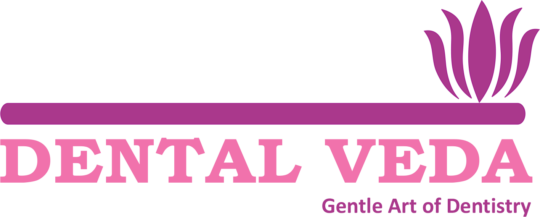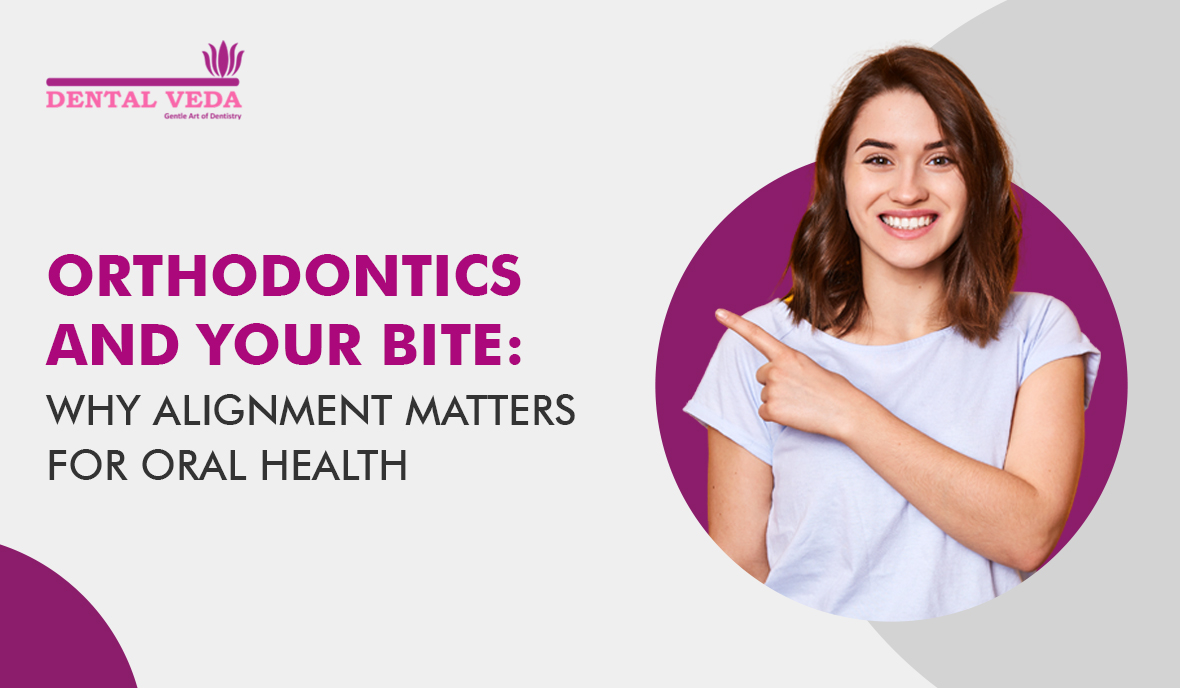Are you tired of hiding your smile because of misalignment?
If so, you’re not alone. Due to dental alignment issues, many people hide their smiles due to uneasy feelings about their teeth.
Misaligned teeth can have a profound impact on your self-esteem and your desire for a radiant smile. But it doesn’t stop there.
Beyond aesthetic concerns, the way your upper and lower teeth come together when you bite and chew plays a significant role in your overall dental health. Let’s explore why bite alignment matters and how orthodontics can help achieve a healthy bite.
Understanding the Bite
To understand why alignment matters, we first need to understand what constitutes a bite. A bite or dental occlusion refers to how your teeth, jaw, and muscles come together when you close your mouth.
A healthy bite refers to the optimal alignment and positioning of upper teeth and lower teeth when the jaw is closed, allowing for efficient chewing and proper distribution of forces during biting. However, not everyone is fortunate to have a perfectly aligned bite.
Many individuals experience bite problems, known as malocclusion or misalignment of teeth. There are different variations of misalignment, including
- Overbite
- Underbite
- Crossbite
- Open bite
- Crooked teeth
- Gapped teeth
- Crowded teeth
These malocclusions can be caused by various factors, such as genetics, traumatic injuries to the face or jaw, or childhood habits like thumb sucking, tongue thrusting, pacifier use, etc.
Effects of Misalignment on Oral Health
Misalignment of the teeth and jaws can significantly impact oral health. It goes beyond the mere aesthetics of a straight smile and affects various aspects of overall dental well-being. Here are some ways misalignment can impact oral health:
- Tooth Decay
- Difficulty Chewing
- Gum Disease
- Wear and Tear
- Temporomandibular Joint Disorder (TMD)
- Speech Impairment
- Effects on Facial Aesthetics and Self-Confidence
When the teeth are not properly aligned, it becomes challenging to clean them effectively. As a result, plaque and bacteria can accumulate in hard-to-reach areas, such as gaps or overlaps between the teeth. This buildup increases the risk of tooth decay and cavities.
Additionally, misaligned teeth can create uneven pressure during biting and chewing, which may lead to excessive wear and tear on certain teeth, further increasing the risk of tooth decay.
When teeth are misaligned, it can make it challenging to bite and chew food properly. Crooked or crowded teeth may not fit together correctly, causing difficulty in chewing food and breaking it into smaller pieces. As a result consequence, you may experience discomfort while eating and struggle to digest the food properly.
When the teeth are not properly aligned, it can create pockets or gaps between the teeth and gums. These spaces can trap bacteria, plaque, and food debris. Misaligned teeth also make it difficult to maintain proper oral hygiene practices. This can lead to inflammation and infection of the gums, resulting in gingivitis, an early sign of gum disease. If left untreated, gum disease can progress to more severe conditions, such as periodontitis, which can cause gum recession, bone loss, and tooth loss.
When teeth are not aligned properly, certain teeth may bear more force during biting and chewing than others. This uneven distribution of force can lead to premature wear of the tooth enamel, causing flat or worn-down surfaces. Over time, this can weaken the teeth and increase the risk of fractures or tooth sensitivity.
This uneven force can also lead to trauma within the mouth, such as accidentally biting the tongue or cheek. Continuous biting trauma can cause irritation, discomfort, and even the development of sores or ulcers in the oral tissues.
The temporomandibular joint (TMJ) is the joint that connects the jawbone to the skull. Bite misalignment can place excessive stress on this joint, leading to Temporomandibular Joint Disorders (TMD). Symptoms of TMD include clicking or popping sounds while opening or closing the mouth, headaches, jaw pain, and limited jaw movement. TMD can significantly impact daily activities, including eating, speaking, and even yawning.
The position and alignment of teeth play a crucial role in forming certain sounds and pronouncing words clearly. When the teeth do not come together correctly, it can interfere with the proper formation of sounds. This can result in speech difficulties, lisping, slurring, or difficulty pronouncing certain words or sounds.
Misalignment of the teeth can affect the face’s overall appearance and smile. Crooked, protruding, or misaligned teeth may impact facial aesthetics, leading to self-consciousness and a lack of confidence in social and professional settings. This can negatively affect an individual’s self-esteem and quality of life.
Orthodontic Solutions for Alignment Issues
The appropriate orthodontic solution for your teeth misalignment varies depending on factors like type and severity of misalignment, age, oral health condition, treatment goals, and personal preferences.
During your orthodontic consultation, the orthodontist will perform a comprehensive examination, including taking X-rays, photographs, and dental impressions. They will evaluate your needs and discuss the various treatment options available.
Let’s explore some commonly used orthodontic solutions:
Traditional braces
Braces consist of metal brackets bonded to the teeth with elastic bands and wires. These braces apply gentle and controlled pressure to your teeth over time, gradually guiding misaligned teeth into proper alignment. Metal braces are highly effective in correcting a wide range of alignment issues, including severe crowding, spacing, and bite problems. With metal braces, orthodontists have precise control over tooth movement and are suitable for patients of all ages.
Clear Aligners
Clear aligners such as Invisalign and SureSmile have gained popularity in recent years due to their discreet and removable nature. These aligners are made from transparent, BPA-free plastic and are custom-designed to fit snugly over the teeth. Clear aligners use a series of progressively changing trays to apply gentle pressure and gradually shift the teeth into alignment. These aligners are particularly popular among teenagers and adults seeking a more aesthetically pleasing alternative to traditional braces.
Orthodontic appliances
In some cases, an orthodontist may recommend the use of other orthodontic appliances to fix alignment issues. These orthodontic appliances include
- Headgear:
Headgear is attached to aligners or braces to exert external force to jaws and teeth, correcting bite misalignment and guiding growth in children
- Space maintainers:
These appliances are used for holding space for permanent teeth when primary teeth are lost prematurely. The space maintainers are of four types: distal shoe, crown and loop, lingual, and unilateral.
- Retainers:
Retainers are used to maintain the new, correct position of teeth after orthodontic treatment. The custom-made device holds the teeth in its new position, so they don’t move.
- Expanders:
Expanders are used to widen the upper jaw in cases of narrow dental arches or crossbites
Orthodontic Procedures
In severe cases of malocclusion, an orthodontist may recommend additional orthodontic procedures to achieve optimal alignment. These procedures can include:
- Tooth Extraction:
In cases of severe crowding or impacted teeth, the orthodontist may recommend tooth extraction to create space for proper alignment.
- Interproximal Reduction:
Also known as tooth stripping, this procedure involves removing small amounts of enamel between the teeth to create space for alignment.
- Orthognathic Surgery:
Orthognathic surgery may be necessary in complex cases where skeletal discrepancies are present. This surgery involves repositioning the jawbones to achieve proper alignment, and it is often performed in collaboration with a surgeon.
Orthodontic solutions correct alignment issues and provide long-term oral health benefits. Properly aligned teeth are easier to clean and maintain, reducing the risk of tooth decay, gum disease, and other oral health problems. Additionally, a well-aligned bite contributes to proper chewing and speech function, improving overall oral functionality.
Dental Veda is your go-to dental clinic for top-notch orthodontic treatment in Gurgaon if you are concerned about your alignment or have any orthodontic issues. With our team of highly skilled orthodontists, we are proud to be recognized as the best orthodontist in Gurgaon.
Take the first step towards a confident smile by scheduling a consultation with us today. Achieve the beautiful, aligned smile you deserve with the trusted experts in orthodontic treatment in Gurgaon.
Frequently Asked Questions
At what age should orthodontic treatment begin?
Orthodontic treatment can be initiated at any age. However, early intervention during childhood or adolescence is often recommended as it allows for better treatment outcomes by taking advantage of ongoing growth and development.
Can I undergo orthodontic treatment if I have other dental conditions?
In most cases, orthodontic treatment can be performed alongside other dental treatments. If necessary, the orthodontist will collaborate with other dental specialists to create a comprehensive treatment plan that addresses all your dental needs.
Can orthodontic treatment be done with primary teeth?
Orthodontic treatment primarily focuses on aligning permanent teeth. However, early orthodontic intervention may be recommended in some cases to address certain bite or alignment issues while the primary teeth are still present. Your orthodontist can evaluate and determine the appropriate timing for treatment.


